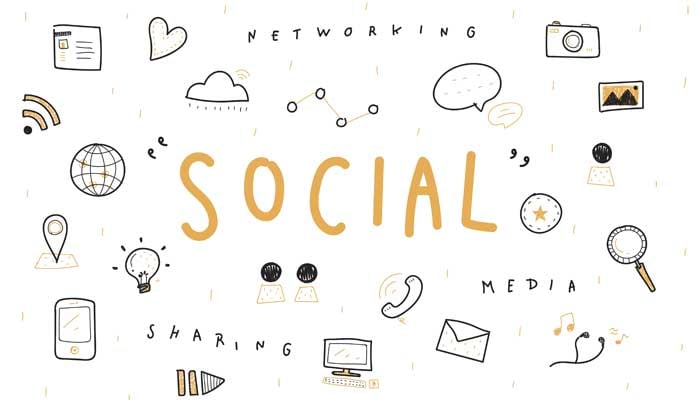Episode 104 - Top 5 Branding Mistakes You Can Easily Avoid at Your Bank or Credit Union


Don't Miss An Episode, Subscribe Now

In this episode of the Hit Record Podcast, CEO Meredith Olmstead is joined by Digital Marketing Director Rebecca Gwaltney to break down the top five branding mistakes that banks and credit unions should avoid. From inconsistent logos to outdated visuals and confusing calls-to-action, they share practical tips and simple fixes that can help financial institutions present a more cohesive, modern, and trustworthy brand. Whether you're building a new website or refreshing your ads, this conversation is packed with branding insights you can apply right away.
Key Takeaways:
-
Inconsistent Branding: Varying colors, fonts, and logos across platforms confuse your audience and erode trust. Establish and enforce a brand guide across departments.
-
Overcomplicated Logos: Logos must be flexible across all digital placements. Create simplified versions for small screens and social icons.
-
Generic Stock Photos: Relying on generic imagery weakens emotional connection. Use real team members or layered graphics to add personality.
Transcription:
Meredith Olmstead:
Hi there, I'm Meredith Olmstead, CEO and Founder of FI GROW Solutions. We are a digital marketing and sales consulting agency, we work exclusively with banks and credit unions. And I am here with Rebecca Gwaltney. Say, hi, Rebecca.
Rebecca Gwaltney:
Hi everyone.
Meredith Olmstead:
Rebecca is our digital marketing and inbound guru, she's basically in charge of everything behind the scenes for all of our client campaigns, and website builds, and capacity around projects and then ongoing retainer clients so she kind of touches everything for all of our clients. And we were just talking about a bunch of projects that she was doing around digital ads of all things, which is kind of weird because she doesn't usually work in digital ads. But one of the things that she was working on was refreshing some of the creative pieces for some of our clients and their digital ads on YouTube and also other placements, not just YouTube, but also social media and in other placements that they're having in other digital channels. So she was kind of griping about what she was seeing with some of our clients and just generally around branding and the real variety of inconsistency around branding.
And so what we decided we were going to hit record and talk about was the top five mistakes that she was seeing in branding and things that were kind of quick fixes or things that she really wanted to address, so here we are. So we're going to talk about the five branding mistakes that need to be avoided when you are really trying to stay consistent and make sure that the look and feel, at least the aesthetics. We're not talking about the mission, vision, value statement, all of that because all a big part of your brand too. But really just the look and feel and what look you're trying to go for with your bank or your credit union. So jump right in, Rebecca, what is the first thing that you're really talking about that was really getting on your nerves, what you were seeing?
Rebecca Gwaltney:
Something that I have come across quite a bit when it comes to branding is the split personality. I'm going to give each of them a little bit of a name so that we can have some fun.
Meredith Olmstead:
Okay.
Rebecca Gwaltney:
It's when logos, colors, fonts, when they vary across all different platforms. So whether it's one way on your website, social media, a little bit different. And then when we work with clients, sometimes you'll see printed materials looking a little bit different so it's just an inconsistency across all of them. And it matters because when you're inconsistent like that, you can confuse your membership, your brand can feel scattered, you're not being consistent. And we know that when it comes to choosing a financial institution, trust really matters. So we want to be consistent.
Meredith Olmstead:
Yeah, I think it is funny because it can be really subconscious in a way that if it looks a little bit different, you might not notice it at first. But then when you start to see, oh, that looks really different from what I just saw when I just read something that came in the mail, or I was just at a branch, or I just saw an ad when I was on the website or something look very different. And then you start to feel like, oh, they might not have their stuff together, I won't use the regular word. If they don't have their act together on the main things about what they look like then what else are they messing up behind the scenes? That is really the key. So definitely consistency helps to build trust with your customers or your members or your potential new members or customers.
Rebecca Gwaltney:
Right. Okay.
Meredith Olmstead:
What was the second one that you were talking about?
Rebecca Gwaltney:
Yeah, so real quick before we hop into the second one, I just wanted to give them a quick tip on how they can fix the first one.
Meredith Olmstead:
Oh, sorry, okay.
Rebecca Gwaltney:
So we're not going to point out the little issues that we're seeing without the correction. So the real correction here is to make sure that you have a brand book built and activated. So whether that means a quarterly audit by your team or a brand cop that takes a view and it's not just the marketing team, it's frontline, it's their email signatures, it's loan department, it's everybody so we just want that little refresh, minor audits if we can we don't want to add too much work, but make sure everybody's aligned. That will help with the brand consistency.
Meredith Olmstead:
Yeah, that does make sense. And then it might be fun too to kind of empower people even in different departments to say, "Hey, here's our brand guide. Do me a favor, if you see anything that you come across that happened to fall through the cracks." Because it happens, we're all human, we all make mistakes. It's okay, there's nothing wrong with making a mistake. I mean, nobody's going to get in trouble because something was the wrong color by mistake or because the wrong font or whatever, it's a learning opportunity to make sure you fix it and it doesn't happen again. So you can empower people by giving them the information and saying, if you see it, say something so that we can fix it and make it better. Great. Okay, good idea. What's the next one?
Rebecca Gwaltney:
Yep. The next one is what we like to call the Franken logo. So overcomplicated logos-
Meredith Olmstead:
I love these names.
Rebecca Gwaltney:
Halloween, we're getting closer to Halloween right now in this moment so my brain's turning. Overcomplicated logos, outdated, design trends. Going from desktop to mobile is a huge thing that we see, going from logos on websites to social media icons it can really get blurry, literally and figuratively I guess. So when logos change, they don't work on smaller sizes your brand can feel stuck in the past if it's shrunk like that. We just want to make sure whether it's a printed piece of material on the website or a social icon, that there's consistency across all of them and the colors work together and the icons are similar and it's just really important for consistency there.
Meredith Olmstead:
I mean, we were even just doing this, we were working on some print materials before we started this podcast and we are FI GROW Solutions, but I was just making Rebecca take off the solutions from our logo when we were just working on a printed piece for the Mac conference that we're going to later this month. And I didn't like the way the solutions looked on the printed piece because it was smaller than the FIGO and I was like, just take it off, FI GROW is fine, it's still consistent but you can take off that smaller part. So if you can make something a little simpler and it's still consistent with your brand, that's okay. And again, it's simplifying it for the channel or the purpose that you're using it so it's similar to that. So yeah, I get it, it makes sense. And then that was maybe how you fix it, right? Yeah.
Rebecca Gwaltney:
Exactly, yeah. Yep. So part of that brand guide, you can have a logo suite, so whether that's a primary logo, approved secondary logos for simplified icon versions. So definitely getting the okay just for consistency, how you can modify it, if at all. And just keep in mind that the smaller screens are going to still need clear, simple logos.
Meredith Olmstead:
All right, what's the third one?
Rebecca Gwaltney:
Yep, so this one can be challenging for some credit unions or banks, but there's a lot of value, stock photo syndrome. So it's easy for all of us to hop on some of the free or paid image services to download the images even Canva has some at this point, but when you rely a lot on generic stock photography business people without adding your own flair, without adding, customizing in a way to make it feel like yours, not using your own staff members or customers or members like that, yeah, it can just eliminate emotional connection, I guess you can say to your brand. It makes it feel like what you're saying could be said by any other financial institution.
Meredith Olmstead:
Yeah, a hundred percent. And so I'll just jump right to the fix then, the two main fixes we see are either you take your own photography and you mix it in and it feels a little less generic, a little more real. People recognize themselves or people they've seen in some of the pictures or you mess with the pictures on our website or even on other bank and credit union websites I see it all the time where you layer in fun graphics or you cut people out and you put something fun in there, there's so much of that going on online in lots of industries now it's with that graphic layered into photo and imagery, it's really artistic and very, very on trend right now and I love it. I love the mix of graphics with imagery, so that works really nicely to mix up the visual experience on a website. All right, number four.
Rebecca Gwaltney:
Yep. All right, the everything bagel. It sounds a little crazy and it is, it's overloading your marketing materials, overloading flyers, emails, website pages, text heavy, it's hard to read through. Too many images, confusing call to action, it's just trying to do everything at once in one piece.
Meredith Olmstead:
Okay.
Rebecca Gwaltney:
Yeah, it can just be overwhelming; it can dilute what your key message might be. So whether you're creating a piece of content for personal loans and you're distracting them with three other options, kind of taking their attention away from them, it can be overstimulating and reduce the effect that you're trying to get from creating it in the first place.
Meredith Olmstead:
Yeah, yeah, that's not even so much around even just the brand, but yes, just like, okay, well we're going to talk about the brand is there but then it's like, oh my gosh, let's throw a thousand other things that they might want to consider at them. It's really that one message, one call to action that is the how to fix, it's that rule. And if you want to make sure that you're giving them options, give them that same option down the page a few times, but still that one message, that one option, one message, one option down the page. And then the last one.
Rebecca Gwaltney:
Yep. The last one is the time capsule. So this is something that we do tend to encounter quite a bit. It's when the same brand is there, but it tends to be outdated. It's not updated as the messaging and as the bank or credit union evolves over time, still using early two thousands graphics or fonts. And while a brand is important, you still want to be innovative, you still want to develop as time goes on, to improve, to connect with your membership or customer base in different ways. So definitely you need the plan to refresh it, whatever that is that your team agrees on.
Meredith Olmstead:
Yeah. And you can work with a traditional logo with a very refreshed look and feel. Now, I will say that logos will probably need to be reworked every probably five to seven or 10 years and that sometimes can be painful for those older board members and older customers, but even an older logo sometimes can stay while you're reworking your brand and you can keep the same name sometimes and rework a logo really nicely and make it feel good.
So I think at the bottom end of the day, it is about making sure that you are evolving as times evolve and as your customer base evolves, and making sure that that aesthetic experience feels like it's trustworthy, and it's innovative, and it's technologically sound. So that's really important in financial services because if it doesn't feel that way, people are not going to trust you with their money.
So thank you so much, Rebecca, I really appreciate your time-
Rebecca Gwaltney:
Absolutely.
Meredith Olmstead:
... and you sharing these experiences that you're having while you're working with clients and seeing what they're doing with their brand. If you're interested in learning more about branding for your bank or credit union, please visit us at figrow.com. Have lots of other podcasts and blogs, so come and visit us. We would love to have you join our mailing list and otherwise let's just all get out there and make it happen.








Blog comments